|
|
|

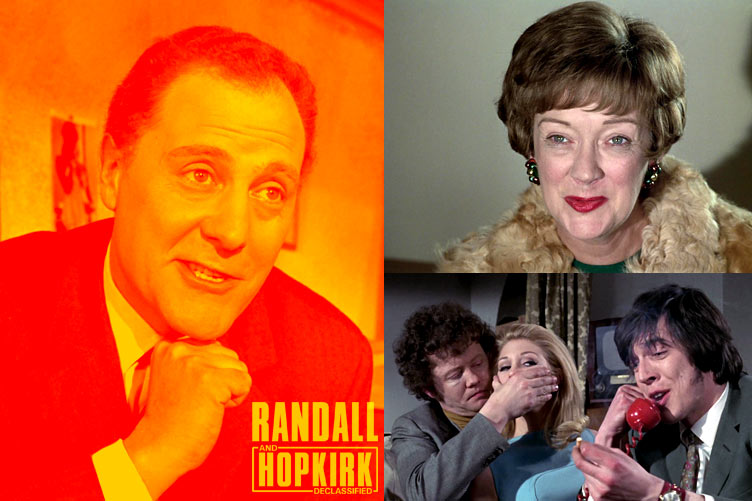
|
Images © ITV Studios, 1969 /
Composition @ Alan Hayes © 2024 |
|
Writer: Donald James Director: Jeremy Summers |
|
ORIGINAL ITC SYNOPSIS |
|
Jean Hopkirk is held
hostage to stop her giving evidence in a murder
case - and not even a ghost can find her.
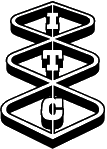
When Jeff Randall and Jean
Hopkirk see a man coming out of their car, they
believe him when he says he has entered the
wrong car in error - until they find a dead body
in the back.
The body is than of a
protection racketeer named Jennings, and
Inspector Large is aware of the fact that there
has been a long-standing feud between Jennings
and rival racketeers George and Mort Roden.
Jeff and Jean are easily
able to identify George Roden as the man they
saw leaving their car, and George is arrested.
His mother, the brains behind her sons' racket,
is not unduly perturbed; their crooked lawyer
Ralph Sorrell will be able to handle this but,
of course, it means that Jeff and Jean will have
to be prevented from giving evidence.
When Jean disappears, it
looks as though the case against George will
collapse unless she can be found. But finding
her is no easy business. Marty Hopkirk is not
only worried but puzzled. His widow's aura leads
him every time to her apartment, but she
certainly isn't there.
The case against George
Roden opens and hinges entirely on Jeff Randall,
who is fully aware that his evidence will not
only convict Roden but endanger Jean - and this
is confirmed by a telephone call enabling him to
hear the abducted Jean's voice. He decides not
to give evidence until he has found her. The
case is adjourned until the following day and
Jeff and Marty have only until the morning to
trace the missing girl.
Jeff scours London, getting
nowhere, and Marty is increasingly puzzled as
Jean's aura repeatedly leads him back to her
apartment.
It's the indoor television
aerial that enables the ghostly Hopkirk to learn
the truth... (see Trivia, below)
|
|
|
PRODUCTION & ARCHIVE |
Production
Code:
RH/DCW/4020
Filming Dates: Apr 1969
Production Completed: Early Aug 1969
Recording Format: 35mm Colour Film
Archive Holding: 35mm Colour Film |
|
UK REGIONAL PREMIERES |
|
Anglia: Mon 10 May 1971, 11.00pm
ATV: Mon 15 Jun 1969, 7.30pm
Border: Fri 11 Jun 1971, 7.30pm (M)
Channel: Sat 11 Mar 1972, 5.10pm (M)
Grampian: Wed 14 Oct 1970, 8.00pm (M)
Granada: Fri 24 Apr 1970, 7.30pm
HTV: Sat 28 Nov 1970, 6.25pm (M*)
LWT: Fri 16 Jan 1970,
7.30pm
Scottish:
Thu 17 Aug 1972, 6.15pm
Southern: Wed 18 Feb 1970,
8.00pm
Tyne Tees: Thu 21 Jan 1971,
8.00pm (M*)
Ulster: Sun 18 Oct 1970, 3.45pm
Westward: Sat 11 Mar 1972, 5.10pm
Yorkshire: Wed 23 Sep 1970, 8.00pm |
(M) =
Transmitted in Monochrome/Black and White
(M*) = Transmitted in B/W due to ITV Colour
Strike |
|
CHARACTERS & CAST |
|
Jeff
Randall
Marty Hopkirk
Jean Hopkirk
Inspector Large
Mrs. Roden
George Roden
Mort Roden
Sergeant Hinds
Mike Hales
Ralph Sorrell
Loftus
Tina
Jennings
Ben Craddock
Tramp
The Judge
Shop Assistant
Harry
Uniformed Inspector
Sergeant
Chalmers
Prosecuting Counsel (Parker) |
Mike Pratt
Kenneth Cope
Annette Andrι
Ivor Dean
Madge Ryan
Stanley Meadows
Dudley Sutton
Richard Kerley
Norman Eshley
John Bryans
Billy Milton
Tricia Chapman
Roland Curram
Dudley Jones
Walter Sparrow
A. J. Brown
David Cargill
Michael Gover
John Arnatt
Bruce Beeby
John Harvey |
|
UNCREDITED |
Man at Amusements
Man in Identity Parade
Man in Identity Parade
Court Observer
Police Driver |
Jim Brady
Frank Henson
Tony Allen
Philip Stewart
Bill Westley Sr. |
|
STAND-INS |
Jeff Randall
Marty Hopkirk
Jean Hopkirk |
Harry Fielder
Dougie Lockyer
Tina Simmons |
|
BLU-RAY
RESTORATION |
|
35mm Interpositive /
Magnetic soundtrack
(negative does not
exist) |
|
EPISODE SPECIAL FEATURES |
|
Commentary by
assistant director Ken Baker and production
supervisor Malcolm Christopher (2005), Photo
Gallery |
|
ORIGINAL SOUNDTRACK |
|
Music for this
episode was recycled from stock and therefore no
release of a soundtrack of Could You Recognise the
Man Again? has been issued |
|
|
PRODUCTION CREDITS |
|
An ITC Production
Writer Donald James
Series Theme / Musical Director Edwin Astley
Series Creator / Executive Story Consultant Dennis
Spooner
Creative Consultant - Cyril Frankel
Producer Monty Berman
Director Jeremy Summers |
|
Production
Supervisor Ronald Liles
Director of Photography Brian Elvin
Art Director Charles Bishop
Post Production Philip Aizlewood
Editor John Ireland
Production Manager Malcolm Christopher
2nd Unit Director Jack Lowin
2nd Unit Cameraman Gerald Moss
Casting John Owen
Stunt Co-ordinator Frank Maher
Sound Recordists Denis Porter and Dennis
Whitlock
Sound Editor Guy Ambler
Music Editor Alan Willis
Set Dresser Sue Long
Construction Manager Bill Greene
Sound Effects Cinesound
Titles Chambers + Partners
Camera Operator Val Stewart
Assistant Director Ken Baker
Continuity Sally Ball
Production Buyer Peter Dunlop
Make-Up Elizabeth Romanoff
Hairdresser Jeannette Freeman
Costume Supervisor Laura Nightingale
Scenic Artist A. J. Van Montagu
Made on
Location and at Associated British Elstree
Studios, London, England
© Copyright
ITC-INCORPORATED TELEVISION COMPANY LTD MCMLXVIII |
|
|
COULD YOU
RECOGNISE THE MAN AGAIN? REVIEW |
|
Could You Recognise the Man
Again? benefits from a decent script that holds
together well from the pen of Donald James. In many
ways it feels like a throwback to A Sentimental
Journey, what with its London gangland setting and
characters. It is certainly one of the grittier
episodes of the latter part of the series. Of note are
strong performances by Stanley Meadows as a very
cocksure villain, and Madge Ryan as the tough
matriarch of the Rodens' operation. Meanwhile,
refugees from similar roles in Department S,
Dudley Sutton and Norman Eshley are excellent value as
better than average muscle, with Sutton's character
Mort Roden being particularly unpleasant - his creepy
approaches towards the captive Jean are distasteful
but entirely believeable. That said, Could You
Recognise the Man Again?, while a solid episode,
is also one of Randall and Hopkirk's more
pedestrian entries, with little to offer by way of the
fantastical or indeed the humourous. |
|
|
COULD YOU
RECOGNISE THE MAN AGAIN? DECLASSIFIED |
-
Pre-Titles Teaser... At his West
End amusement arcade, Ben Craddock receives an
unwelcome visit from Jennings, a protection
racketeer. Craddock is behind on his payments and
Jennings has come to collect. Craddock stands his
ground, saying that he and his fellow shopkeepers
have changed their stance since Jennings' brother
Mick was sent to prison. He will not pay. Jennings
threatens to smash up every machine that Craddock
owns and storms out after he learns that Craddock
now pays protection money to George Roden. Craddock
is straight on the phone to Roden, to let him know
what has happened. Meanwhile at the Randall and
Hopkirk office, Jean is trying to rush Jeff
through the admin work. They have to be at The
Whitlock Hotel for the Rotary Dinner, where
they will be meeting potential divorce clients. Jeff
has forgotten the engagement and has consequently
neglected to hire a dress suit. Jean orders him out
of the office. A little while later, Jennings meets
with Harry aboard the Woolwich Ferry, complaining
that George Roden is squeezing him out of business.
Harry says that they should get something done about
it. Tonight...
-
Production
Brief...
Could You Recognise the Man Again? was the
twentieth episode to
go before the cameras. It was the fifth (and third consecutive)
episode to have been directed by Jeremy Summers, and the tenth to be written by
Donald James, who at this point was responsible for
writing exactly half of the episodes produced.
-
This episode was set dresser Sue Long's
final engagement on Randall and Hopkirk
(Deceased), with the role being filled
by Roger Christian from
The
House on Haunted Hill until the end of the
series.
-
To achieve the effect of Marty
being levitated towards the ceiling at 44 minutes
and 35 seconds, Kenneth Cope was fitted with a Kirby
harness and was pulled upwards on wires. The
Pepper's Ghost technique, using sparingly in the
series due to the time involved in setting each shot
up, was employed for the special effect of Marty
appearing through the floor in the flat above Jean's
apartment.
-
When Marty appears in the court
room at the end of the episode and is shown looking
down from a position on the ceiling, this was
achieved with a set constructed for
When the Spirit Moves You. A high mounted
camera looked down on this set, giving the
impression that it was looking up at the ceiling.
-
Exact filming dates for this
episode are unknown, but it is believed to have been
filmed in April 1969.
-
A fully edited version of this
episode was completed by early August 1969.
-
On Location...
Could You Recognise the Man Again? sports a
sequence shot at one of the most regularly visited
haunts of ITC and other Elstree-made productions,
The Thatched Barn Hotel - now sadly long gone. The
episode also visits various London West End locales
including its theatreland, some rather seedy
destinations in Soho, and Covent Garden. Lauderdale
Road in Maida Vale and the environs of ABPC Elstree
Studios were also utilised. More details in
Locations: Could You Recognise the Man Again?
-
Haunting Melodies... Edwin Astley was not asked to compose any
new music cues for Could You Recognise the Man
Again?,
with its score coming entirely from stock. Two pieces
of library music were used, namely a recording of
Auld Lang Syne by George Chase, sourced from the
Keith Prowse Maurice (KPM) library and heard at the Whitlock
Hotel Rotary dinner, and Robert
Farnon's Jazz Jumping Bean. There is also a
tiny snatch of John Barry's Mood Three in the
sequence showing sleazy Soho destinations which had
previously been used more expansively in
When
Did You Start to Stop Seeing Things? in
which it was used for the scene where Sir Oliver, under
hypnotic instruction from Marty, behaves like a
secret agent.
-
Trivia...
The story description given in
ITC publicity materials would appear to have been
sourced from an early version of Donald James'
script since it refers to Marty using an indoor
television aerial at the end of the episode in order
to find Jean. In the transmitted episode, since
Marty keeps being drawn back to the flat he used to
share with Jean, Jeff suggests that Marty
concentrates his thoughts on his widow while he is
at the flat. He does and is drawn up towards the
ceiling - as Jean is being held in the flat directly
above.
-
The Whitlock Hotel (in reality
The Thatched Barn Hotel) was possibly named after
regular
Randall and Hopkirk (Deceased) sound recordist
Dennis Whitlock.
-
We do not see the interior of
The Whitlock Hotel and instead the camera zooms in
on the exterior view while the strains of Auld
Lang Syne are sung by the assembled guests
before they depart for their cars. This song is
traditionally sung on New Year's Eve at the stroke
of midnight to bid farewell to the old year. There
are no references to this being a New Year's party,
so the choice of song is odd.
-
As The Thatched Barn Hotel did
not have a sufficiently large car park for the film
crew's requirements, the car park sequences were
filmed at ABPC Elstree Studios in the north eastern
car park near Stage 6. Judging by the footage shot
at this location, there had been snow in the lead-up
to filming.
-
Marty observes the court
proceedings from the ceiling, bringing to mind his haunting
of Calvin P. Bream from a similar position in
When the Spirit Moves You.
-
Could You Recognise the Man
Again? marks the fifth and final appearance in
Randall and Hopkirk (Deceased) by the
brilliant Ivor Dean as Inspector Large. It is to his
credit that it seems that his larger-than-life
character appeared in a great many more episodes
than he did in actuality.
-
One of the uncredited
background artistes seen in this episode, Frank
Henson, who was among the identity parade line-up,
appeared some years later in The Sweeney as
Jack Regan's driver.
-
Perhaps because of the large
number of credited actors in Could You Recognise
the Man Again?, the final on-screen credit in
the end titles of this episode is not for Chambers +
Partners but for Scenic Artist A.J. Van Montagu.
This only occurs in one other episode, The Ghost
Who Saved the Bank at Monte Carlo. In both
cases, the Chambers + Partners mention appears in an
earlier caption.
-
Only You, Jeff?
Marty is drawn back to Jean's apartment when she is
in danger. At first Jeff thinks this is simply him
being drawn back to their home. However, when Marty
concentrates, he finds himself drifting up towards
the ceiling. He eventually emerges through the
ceiling and sees that the Rodens are holding Jean
there - and that is why he has been drawn to the
home they used to share. Marty also later delays the
court proceedings by blowing all the papers around
the room.
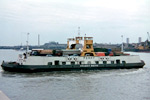 |
1963 Diesel Motor
Ferry 'Ernest Bevin' (Woolwich Ferry)
Registration 304643 |
|
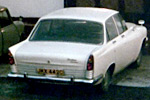 |
1965 Ford
Zodiac Mk III
Registration JKX 442C
Not seen in motion |
Also appeared
in:
Randall and Hopkirk (Deceased) - 'When
the Spirit Moves You', 'Money to Burn' and possibly
'Just for the Record' |
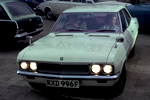 |
1968 Vauxhall
Victor FD 2000
Registration RXD 996F
Driven by Jeff Randall |
Also appeared
in:
Randall and Hopkirk (Deceased) -
used extensively throughout the series
Department S - 'The Last Train to
Redbridge', 'The Man from X' |
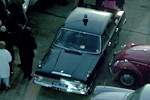 |
1968 Ford
Zephyr 6 MkIV
Registration OXE 998F |
Also appeared
in:
Randall and Hopkirk (Deceased) - 'It's Supposed To Be Thicker Than Water', 'Money to
Burn', 'The Man from Nowhere', 'The Ghost Talks'
Department S - 'The Man in the Elegant
Room', 'The Last Train to Redbridge', 'The Double
Death of Charlie Crippen' |
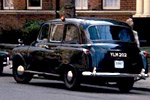 |
Austin FX4 Hackney
Carriage (London Black Cab)
Registration YLM 202
|
|
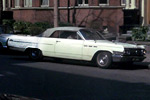 |
1963 Buick LeSabre
Registration ID73 09
Driven by Mort Roden |
Also appeared
in:
Department S - 'The Double Death of
Charlie Crippen' |
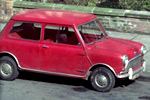 |
1964 Austin Mini Super Deluxe Mk I
Registration BAP 245B
Owned by Jean Hopkirk
(not seen in motion)
|
Also appeared
in:
Randall and Hopkirk (Deceased) -
'My Late Lamented Friend and Partner',
'You Can Always Find A Fall Guy', 'All Work and No
Pay', 'Never Trust a Ghost', 'Vendetta for a Dead
Man', 'A Disturbing Case', 'Somebody Just Walked Over My Grave',
'The Ghost Talks'
Department S - 'The Man from X'
The Saint - 'The Time to Die'
The Persuaders! - 'Greensleeves' |
|
Images © ITV
Studios, 1969 |
-
Seen It All
Before? Mort Roden and Mike Hales could well
have seemed familiar to viewers of Could You
Recognise the Man Again? as the actors who
played these characters - Dudley Sutton and Norman
Eshley - had recently played Sonny and Red, a
similar villainous duo in Department S: Handicap
Dead.
-
The clothing hire store's
interior set was a redress of Sir Oliver Norenton's
consulting room, seen in
When
Did You Start to Stop Seeing Things?,
complete with ornate wall lamps and flock wallpaper
that look somewhat out of place in a department
store.
-
Perhaps unsurprisingly as it
was meant to represent the living space directly
above Jean's apartment, the flat where Jean was held
captive by Mort Roden and Mike Hales was a subtly
redressed version of the standard 'Jean's flat' set.
-
Cock-ups... At just 5 seconds into the episode,
the first cock-up of Could You
Recognise the Man Again? begins to unfold. The
clock on the Del Monico Provisions store on Old
Compton Street tells us it is 12.56pm. Four seconds
later, we are on Frith Street and another clock - on
the wall of the Bar Italia restaurant - reads
1.11pm. Tempus fugit!
-
At 10 minutes and 14 seconds,
Inspector Large is at the morgue, viewing Jennings'
corpse. Only it isn't actor Roland Curram, who we
had seen in the role in the pre-titles teaser!
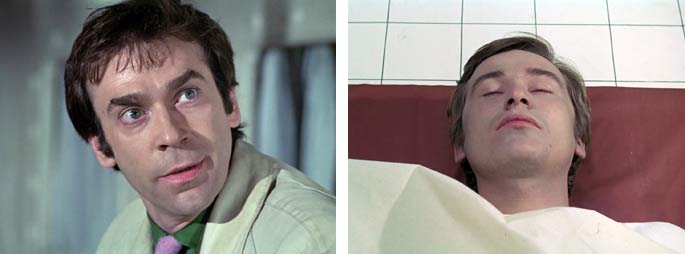 |
|
Images © ITV
Studios, 1969 |
-
A debatable cock-up that looks
sufficiently questionable, meaning that we mention
it here. When Jeff parks up outside the Rodens'
garage (in reality ABPC Studios buildings near
Stage 5), the area outside it looks quite open, but
when we cut to a studio interior the Vauxhall is
seen to be parked up tight to a brick wall opposite.
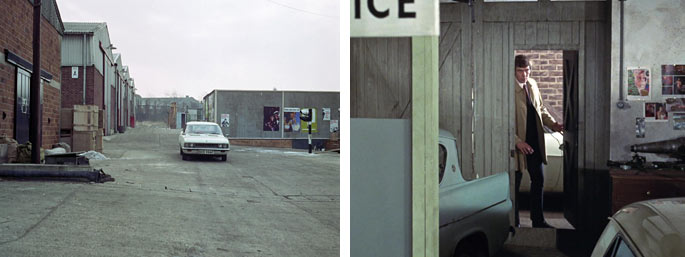 |
|
Images © ITV
Studios, 1969 |
-
At 32 minutes and 16 seconds,
Marty accuses Jeff of having "just stood there and
watched [Mrs. Roden] eating chocolates, and did
nothing". However, Mrs. Roden is not seen to be
eating anything during her confrontation with Jeff
in the scene immediately before. Presumably it was
scripted that she did this.
-
At 43 minutes and 3 seconds, a
light blue truck begins to drive past Jeff, who is
supposedly at Covent Garden but is actually on the
ABPC backlot. As the lorry passes, the shot cuts to
another lorry passing the camera at Covent Garden.
The two lorries are not at all similar. Once Jeff
has completed his business at the market, the same
original truck drives off from a standing start.
 |
|
Images © ITV
Studios, 1969 |
-
And Finally... Seen in this episode as The
Whitlock Hotel, The Thatched Barn in Borehamwood had
a rich history which was brought to an end with its
demolition in 1990. Commissioned in 1927, it opened
in 1934 as a roadhouse and venue where those working
in the local film studios could find entertainment
away from home - not always of a squeaky clean
nature. It was then acquired in 1939 by fairground
and holiday camp entrepreneur Billy Butlin as his
first foray into the hotel business, but the
building was requisitioned soon after in June 1942
by the Inter Services Research Bureau, a division of
the Special Operations Executive, who developed a
top secret research facility at The Thatched Barn
(designated Station XV) to create camouflage,
explosive devices and coding technology. Former film
studio workers, artists, prop makers, and even
magicians were employed to devise these war-winning
inventions. By the end of the conflict, the building
had fallen into disrepair and was eventually taken
over by the Ministry of Works, who used it as their
Building Research Station in the 1950s, where they
tested concrete and other materials and processes.
During this period, the exterior of the building was
seen regularly in locally produced film and
television productions. The building returned to
private hands in 1961 when it was sold at auction
and opened as a casino and playboy venue.
Unfortunately the new owner quickly went bankrupt
after a fire devastated the famed thatched roof in
1962, and the building was purchased by the Tolaini
Brothers, who had been unsuccessful bidders in the
1961 auction. They re-opened The Thatched Barn in
1963 and undertook a £20,000 restoration of the
hotel's swimming pool a year later. Under the
Tolaini Brothers' ownership, the hotel regularly
welcomed important film and television stars working
at ABPC Elstree and MGM-British and other
Borehamwood film studios, including Elizabeth Taylor
and Richard Burton, Bette Davis and, later, Clint
Eastwood. The Brothers also extended the buildings
to almost entirely encircle the pool, increasing the
capacity of the hotel, and its security. Film crews
were welcomed, hence its regular appearances in ITC
and other Borehamwood-made productions, and ITC
stars such as Patrick McGoohan (of Danger Man
and The Prisoner fame) treated The Thatched
Barn as their 'local' - indeed it is Number 6's
local in The Prisoner: The Girl Who Was Death.
After its demolition in 1990, a modern hotel was
built on the land, launched as The Elstree Moat
House, which lacked its predecessor's character and
charm. It still stands today and was acquired by the
Hilton group in 2021 and rebranded as a DoubleTree
Hilton hotel.
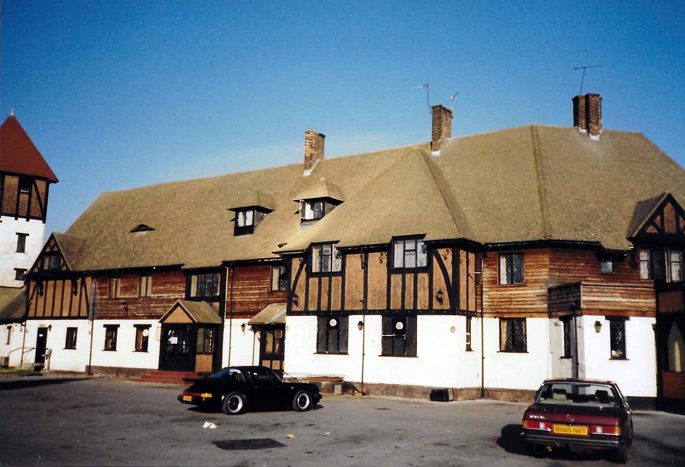 |
|
The Thatched Barn pictured in November
1989, shortly before its demolition
Image © John Holburn, 1989 |
| |
| |
Plotline: Scoton Productions / ITC UK
Transmissions by Simon Coward and Alan Hayes
Review by Alan Hayes Declassified by
Alan Hayes
with thanks to Vince Cox, Alys Hayes, John
Holburn,
Anthony McKay and Andrew Pixley
All timings given on this page relate to the Blu-ray editions of this episode |
|
Back to
Programmes Index
Forward to
The House on Haunted Hill
Locations: Could You Recognise the Man Again?
|
|
|
Back to Top |
|



